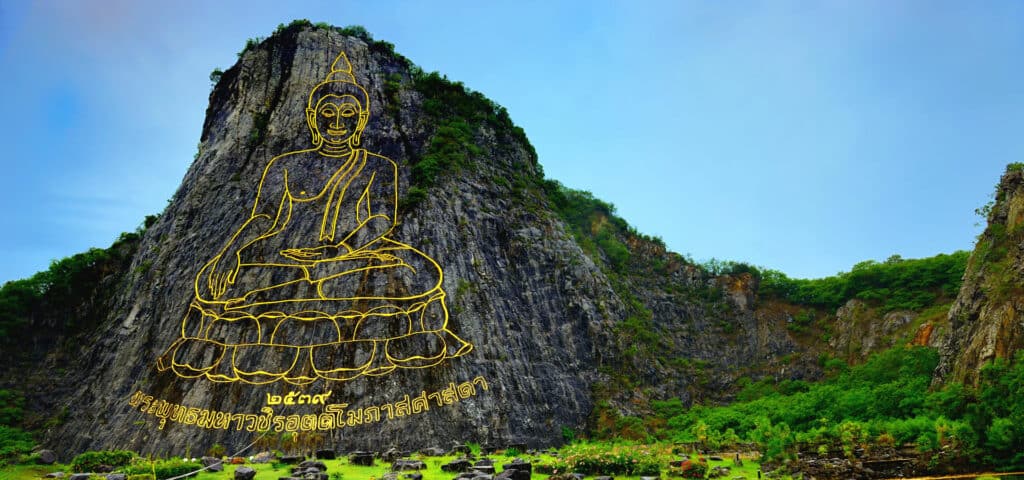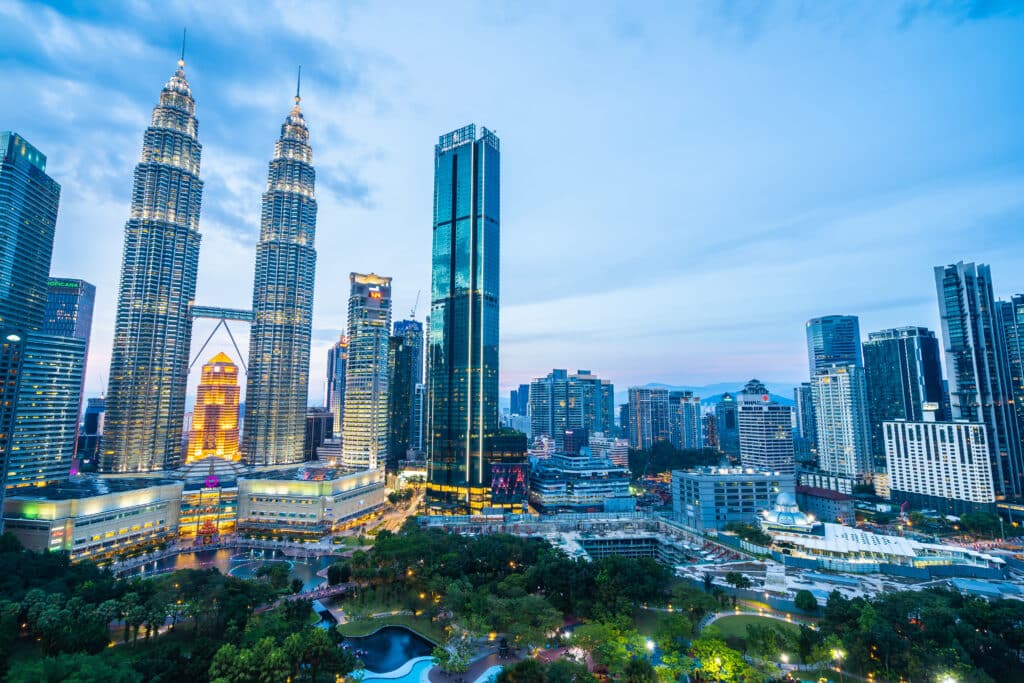Best Places to Retire in Asia
We compiled a list of best places to retire in Asia if you’re seeking to settle in an entirely different continent (or country) and indulge in colorful and incredibly fascinating cultures.
If you are looking to invest as an expat or high-net-worth individual, which is what I specialize in, you can email me (advice@adamfayed.com) or use WhatsApp (+44-7393-450-837).
Thailand’s Eastern Seaboard
Thailand’s eastern seashore, popularly known as the Chonburi Coast, is a 30-mile stretch of beautiful coastline that can be reached in less than two hours by car from Bangkok. Up until the 1960s, the region consisted of a few peaceful fishing villages. Then, it was used as a base for American military activities during the Vietnam War.
Today, this region of Thailand is well-known worldwide and has one of the most diversified expat populations in Southeast Asia, which makes it more deserving to be in our list of best places to retire in Asia. The seashore also provides modernism, first-rate infrastructure, and an international flair despite the presence of a few still-existing, tranquil fishing villages that seem to have stood the test of time.

Bali, Indonesia
Bali is reputed as one of the world’s most stunning tropical islands. Rich jungle, soaring volcanoes, and terraced rice fields spilling down valleys can all be found in this region. In even the smallest settlements, there are multi-tiered Balinese temples. The ocean, which is close by, offers top-notch water sports like parasailing, surfing, snorkeling, and diving.
If you want to experience a five-star lifestyle while on, say, a three-star budget, Sanur in the southeast coast of Bali can be a great option for you. It is a modest suburb of Denpasar, a larger city in Bali. Sanur is tranquil and unhurried, feeling a world apart from the throngs of visitors who visit Bali for vacations and honeymoons. Bali earned its spot among the best places to retire in Asia.
A meal at an inexpensive restaurant in Bali is estimated to cost 25,000 Indonesian rupiah (US$1.68), while a mid-range restaurant can charge 338,500 rupiah for a three-course meal for two, (at the time of writing), according to global cost of living data aggregator Numbeo.
Renting a one-bedroom apartment within Bali’s city center costs about 7.4 million rupiah per month and 4.6 million rupiah outside that area. The costs for buying apartment within and outside the city center can reach 16.1 million rupiah and 6.6 million rupiah per square meter, respectively.
The overall cost of living in the city for a family of four can hit an estimated average of 27.9 million rupiah per month, while a single person can live off 7.7 million rupiah a month, both excluding rent.
George Town, Malaysia
One of the best places to retire in Asia and among the most livable cities in the southeastern part of the region is Penang, dubbed the Pearl of the Orient, with the major selling point being the inexpensive cost of living. The country is safe and stable, and the health treatment is first-rate. English is extensively spoken in its capital George Town because of its colonial background. Traditional and modern aspects of life coexist in this city, which is also fascinating and welcoming.
There are numerous restaurants selling gourmet food that is both good and reasonably priced, and there are at least a dozen museums and other places to experience high culture. One of the best preserved historic cities in Asia may be found outside the high-rise apartments of contemporary George Town, and chic seaside communities with palm-lined sand beaches and a foreground of lush rainforest are practically at the city’s doorstep.
A meal at an inexpensive restaurant is estimated to cost 10 ringgit (US$2.24), while a three-course meal for two in a mid-range restaurant can cost 36 ringgit, according to Numbeo.
Rent for one-bedroom apartments inside and outside George Town’s city center cost 925 ringgit and 650 ringgit on average per month, respectively. The cost per square meter for buying an apartment within the city center is at 6,440 ringgit, while that outside of the area is at 3,941 ringgit.
Da Nang, Vietnam
Da Nang is one of the largest cities in Vietnam with a population of more than 1 million. The city is one of the best places to retire in Asia, particularly for its lifestyle that’s both progressive and rural. Modern roads and buildings are present, but most of the establishments are still family-owned as there are hardly any existing large multinational fast-food or coffee shop chains in the area. There is also a strong sense of entrepreneurship, energy, and passion in this bustling city of malls, skyscrapers, and bridges.
Da Nang is surrounded by beauty, with pristine beaches with fine sand running the length of the city and hills covered in deep vegetation. Three UNESCO World Heritage Sites, such as the historic cities of Hoi An and Hue and the ruins of My Son Hindu temples complex, are easily accessible from the city.
A meal at an inexpensive restaurant in Da Nang is estimated to cost 35,000 Vietnamese dong (US$1.50), while a mid-range restaurant can charge 400,000 dong for a three-course meal for two, according to Numbeo.
Renting a one-bedroom apartment within Da Nang’s city center costs about 7.1 million dong per month and 6.8 million dong outside that area. The costs for buying apartment within and outside the city center can reach 44 million dong and 27.5 million dong per square meter, respectively.
The overall cost of living in the city for a family of four can hit an estimated average of 35.8 million dong per month, while a single person can live off 10.1 million dong a month, both excluding rent.

Chiang Mai, Thailand
With its low cost of living, wonderful climate, rich history, and distinctive culture, the Thai city of Chiang Mai lands a position in our list of best places to retire in Asia. The city has been enticing expats from the west since the 1800s. The old city walls of Chiang Mai contain its core, where historic and contemporary Buddhist temples mix alongside residential and business areas. Beyond the old city walls, Chiang Mai has developed into a modern city with mega malls, international grocery and department stores, and other modern conveniences.
Living cheaply and having access to reasonable healthcare are two of Chiang Mai’s main benefits for retirees. In the annual burning season, which runs from the middle of February to mid-April, local farmers burn their fields so air pollution can be the worst drawback. These months witness a lot of overseas travel by expats.
A meal at an inexpensive restaurant is estimated to cost 55 Thai baht (US$1.54), while a three-course meal for two in a mid-range restaurant can cost 500 baht, according to Numbeo.
Rent for one-bedroom apartments inside and outside Chiang Mai’s city center cost 10,917 baht and 7,115 baht on average per month, respectively. The cost per square meter for buying an apartment within the city center is at 57,000 baht, while that outside of the area is at 34,333 baht.
The overall monthly cost of living in the city for one person can hit 16,907 baht on average, while it can cost 60,549 baht for a family of four, both excluding rent.
Udhagamandalam, India
A hill station was founded in Udhagamandalam, also called Ooty, because of the area’s cool climate, forested hills, and abundance of freshwater. During India’s colonial era, British officials used the hill station as a summer getaway. The natural beauty of Udhagamandalam continues to draw tourists. At 6,000 feet above sea level, this place has a temperature of 58 degrees on average, which is a welcome change from the rest of sweltering southern India.
The town boasts botanical and floral gardens, parks, lakes, a golf course, and a number of early 1800s-era historic structures. The Nilgiri Mountain Railway, a UNESCO World Heritage site, cuts through the surrounding hills and provides a sight of terraced tea estates and the strawberry, plum, and peach farming the region is renowned for. This is the finest way to get a feel for the area. A tranquil retirement in the hill region on a tight budget is possible in Udhagamandalam, which makes it one of the best places to retire in Asia.
Kota Kinabalu, Malaysia
One of the most habitable coastal cities in the world is Kota Kinabalu, which is commonly known as KK, because it is secure, orderly, calm, and clean. The city is also dynamic, vivacious, and contemporary, and you’ll get major benefits like cheap cost of living, as well as excellent and reasonably priced medical care.
Kota Kinabalu is a compact city with a two-mile radius that can be easily walked across. If you opt to settle in the location, you’ll have access to a wide variety of amenity, brand name, cuisine, and entertainment options you could desire. You can spend your retirement days boating, diving, snorkeling, and ferry hopping from the city center to nearby islands. Life in this destination is mostly about the sea. Head here if you don’t mind being out in the sun for long.
A meal at an inexpensive restaurant in Kota Kinabalu is estimated to cost 12 ringgit, while a mid-range restaurant can charge 60 ringgit for a three-course meal for two, according to Numbeo.
Renting a one-bedroom apartment within Kota Kinabalu’s city center costs 1,733 ringgit per month and 633 ringgit outside that area. The costs for buying apartment within and outside the city center can reach 8,399 ringgit and 4,654 ringgit per square meter, respectively.
The overall cost of living in the city for a family of four can hit an estimated average of 8,093 ringgit per month, while a single person can live off 2,228 ringgit a month, both excluding rent.
Da Lat, Vietnam
French colonists looking for relief from the heat and humidity of city life in Vietnam in the 19th century discovered Da Lat, resting at 4,900 feet on the Lang Biang Plateau. Da Lat is incredibly green, and the views of the lake make it seem like a ski resort in the Alps. It is a peaceful and reflective location for retirees. Grand hotels, villas, rose gardens, and cathedrals were imported to Da Lat as examples of French middleclass architecture that built the city that came to be known as Le Petit Paris, which included a scaled-down version of the Eiffel Tower.
Vietnamese tourists, particularly honeymooners, enjoy visiting Da Lat. The city’s perpetual spring weather, with year-round average temperatures of 62 degrees, is its biggest draw. Coffee is produced in greater quantities in the Central Highlands near Da Lat, which backs Vietnam’s second rank in the world for production.
A meal at an inexpensive restaurant in Da Lat is estimated to cost 35,030 dong, while a three-course meal for two in a mid-range restaurant can cost 200,000 dong, according to Numbeo.
Rent for one-bedroom apartments inside and outside Da Lat’s city center cost 8.6 million dong and 3.6 million dong on average per month, respectively. The cost per square meter for buying an apartment outside the city center is at 48.4 million dong.
Kuala Lumpur, Malaysia
A metropolis of contrasts, Kuala Lumpur is located in the center of the Malaysian peninsula. The city has a recognizable skyline anchored by the two towering Petronas Towers, made of gleaming stainless steel. Everything from artisan batik apparel to Tiffany jewelry is available at air-conditioned malls in the former British colony. The historic Malay village of Kampung Baru continues to function as it has for generations in the shadows of this ultramodern environment, less than 20 minutes’ walk from the city center.
Kuala Lumpur is welcoming to foreigners. All Malaysian students are forced to learn English, and many Malaysians use it as their first language while speaking. The public transit system is cutting edge and effective, and the tap water is safe to drink. The health care system is also excellent. Cool mountain getaways can be reached in less than an hour, while beautiful beaches are only a short flight or drive away.
A meal at an inexpensive restaurant in Kuala Lumpur is estimated to cost 15 ringgit, while a mid-range restaurant can charge 100 ringgit for a three-course meal for two, according to Numbeo.
Renting a one-bedroom apartment within Kuala Lumpur’s city center costs 1,913 ringgit per month and 1,201 ringgit outside that area. The costs for buying apartment within and outside the city center can reach 10,137 ringgit and 5,519 ringgit per square meter, respectively.
The overall cost of living in the city for a family of four can hit an estimated average of 7,941 ringgit per month, while a single person can live off 2,212 ringgit a month, both excluding rent.

Hua Hin, Thailand
On the western shore of the Gulf of Thailand, Hua Hin is a sprawling beachside town with a sizable expat population. The weather in this location is pleasant year-round. Even on a tight budget, a retiree can maintain a high level of living, which may include frequent dinners at five-star establishments and days spent playing golf in the city. The majority of Thailand’s royal family spends their summers at Hua Hin, which is a cozy area to retire.
The town already offers quality medical care, but Bangkok is close by if you wish to transfer to some of the best hospitals in the area. In terms of housing, you can select from beachfront homes, contemporary gated communities, as well as modern condos. Reading groups, festivals, cycling groups, soccer leagues, wine tastings, and darts competitions are among the ways the large expat community interacts.
A meal at an inexpensive restaurant in Hua Hin is estimated to cost 100 baht, while a three-course meal for two in a mid-range restaurant can cost 1,000 baht, according to Numbeo.
Rent for one-bedroom apartments inside and outside Hua Hin’s city center cost 12,250 baht and 10,438 baht on average per month, respectively. The cost per square meter for buying an apartment within the city center is at 66,250 baht, while that outside of the area is at 51,000 baht.
The overall monthly cost of living in the city for one person can hit 16,590 baht on average, while it can cost 59,315 baht for a family of four, both excluding rent.
Best Places to Retire in Asia: Bottom Line
The sheer number of the best places to live in Asia makes it impossible to feature them all in one guide. When deciding where to go, you should ultimately consider your own needs and wants. Examine the advantages and disadvantages of a location before making a decision and always take your time.
Pained by financial indecision? Want to invest with Adam?

Adam is an internationally recognised author on financial matters with over 830million answer views on Quora, a widely sold book on Amazon, and a contributor on Forbes.


